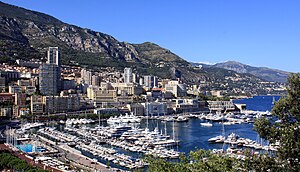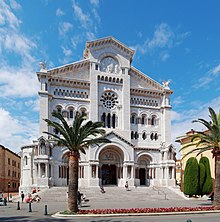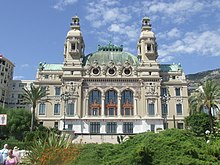
Monaco, officially the Principality of Monaco, is a sovereign city-state and microstate on the French Riviera a few kilometres west of the Italian region of Liguria, in Western Europe, on the Mediterranean Sea. It is a semi-enclave bordered by France to the north, east and west. The principality is home to nearly 39,000 residents as of the 2020s, of whom about 9,500 are Monégasque nationals. It is recognised as one of the wealthiest and most expensive places in the world. The official language of Monaco is French. Monégasque, English and Italian are also spoken and understood by many residents.

Monte Carlo is an official administrative area of Monaco, specifically the ward of Monte Carlo/Spélugues, where the Monte Carlo Casino is located. Informally, the name also refers to a larger district, the Monte Carlo Quarter, which besides Monte Carlo/Spélugues also includes the wards of La Rousse/Saint Roman, Larvotto/Bas Moulins and Saint Michel. The permanent population of the ward of Monte Carlo is about 3,500, while that of the quarter is about 15,000. Monaco has four traditional quarters. From west to east they are: Fontvieille, Monaco-Ville, La Condamine, and Monte Carlo.
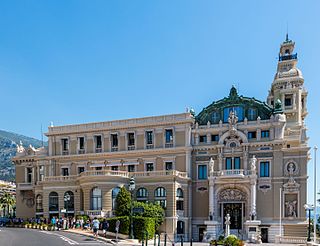
The Opéra de Monte-Carlo is an opera house which is part of the Monte Carlo Casino located in the Principality of Monaco.

Jean-Louis Charles Garnier was a French architect, perhaps best known as the architect of the Palais Garnier and the Opéra de Monte-Carlo.

Monaco is a sovereign city-state, country, and microstate on the French Riviera, along the Mediterranean coast. The country has long been under the control of the Grimaldi family, who have encouraged musical development. Prince Rainier III introduced the Prince Rainier III Prize for Musical Composition to reward Monegasque musicians.

The Prince's Palace of Monaco is the official residence of the Sovereign Prince of Monaco. Built in 1191 as a Genoese fortress, during its long and often dramatic history it has been bombarded and besieged by many foreign powers. Since the end of the 13th century, it has been the stronghold and home of the Grimaldi family who first captured it in 1297. The Grimaldi ruled the area first as feudal lords, and from the 17th century as sovereign princes, but their power was often derived from fragile agreements with their larger and stronger neighbours.

The Monte Carlo Casino, officially named Casino de Monte-Carlo, is a gambling and entertainment complex located in Monaco. It includes a casino, the Opéra de Monte-Carlo, and the office of Les Ballets de Monte-Carlo.

The following outline is provided as an overview of and topical guide to Monaco:
The Société des Bains de Mer, officially the Société Anonyme des Bains de Mer et du Cercle des Etrangers à Monaco, is a publicly traded company registered in the Principality of Monaco. SBM owns and manages the Monte Carlo Casino, the Opéra de Monte-Carlo and the Hôtel de Paris in Monte Carlo.

The Hôtel de Paris Monte-Carlo is a luxury hotel that is located at Place du Casino in Monte Carlo, Monaco. It was opened in 1864 as part of the development of Monaco by the Société des Bains de Mer. In March 2019, the hotel reopened after undergoing a $280 million renovation, which took more than four years to complete.
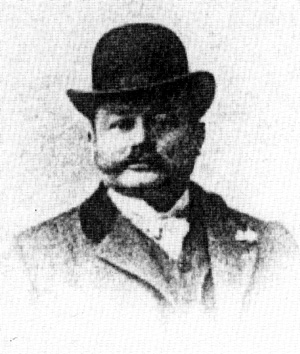
Hans-Georg Tersling was a Danish architect who lived and worked for most of his life on the French Riviera where he became one of the most significant and productive architects of the Belle Époque. His work mainly consisted of designing mondain hotels, villas and mansions for members of the French and European aristocracy and other elite who resided in the area.

The Hôtel Hermitage Monte-Carlo is a palace style Belle Époque in the heart of Monaco on the French Riviera. It belongs to the Société des bains de mer de Monaco. It was built in 1890 and 1896 the architect Nicolas Marquet with the participation of Gustave Eiffel.

The Monte-Carlo Beach is a hotel located in Roquebrune-Cap-Martin, a commune in the Alpes-Maritimes department in southeastern France. Situated on the Côte d'Azur just outside Monaco proper, the Monte-Carlo Beach hotel belongs to the Société des bains de mer de Monaco. It was built in 1929 by the architect Roger Seassal and was redesigned in 2009 by India Mahdavi.

Édouard-Jean Niermans was a famous Dutch-born French architect during the Belle Époque.

The architecture of Paris created during the Belle Époque, between 1871 and the beginning of the First World War in 1914, was notable for its variety of different styles, from neo-Byzantine and neo-Gothic to classicism, Art Nouveau and Art Deco. It was also known for its lavish decoration and its imaginative use of both new and traditional materials, including iron, plate glass, colored tile and reinforced concrete. Notable buildings and structures of the period include the Eiffel Tower, the Grand Palais, the Théâtre des Champs-Élysées, the Gare de Lyon, the Bon Marché department store, and the entries of the stations of the Paris Metro designed by Hector Guimard.

Henri Alexandre Negresco was a Romanian hotelier and founder of the Hotel Negresco in Nice, France. He died bankrupt after World War I, his hotel having been commandeered into a hospital during the war. During the 14 July 2016 attack on the Promenade des Anglais, Negresco's hotel once again became a field hospital used to aid victims.
The historical villas of Monaco represent a significant example of residential architecture. Originally seen as symbols of Belle Epoque luxury, they were once emblematic of the Principality itself. However, by the 1950s they were viewed by Monaco's Consultative Committee on Public Works as a social anachronism. While recent years have seen a renewed appreciation within the Principality for villa architecture, the number of historic villas remaining declines each year. In 1954 the Principality possessed 688 villas; only a small fraction of that number still survive.

The Hotel Metropole Monte Carlo is a five-star hotel at 4, Avenue De La Madone, Monte Carlo, Monaco.
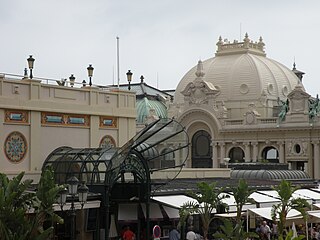
The Café de Paris is a coffeehouse and restaurant in the Belle Époque style of the 1900s, located in Monte Carlo and next to the Casino de Monte-Carlo, on the Place du Casino, facing the Hôtel de Paris. It is owned and managed by the Société des bains de mer de Monaco.
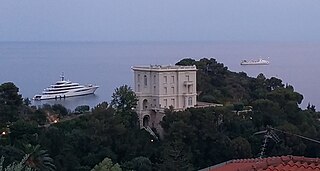
Villa la Vigie is a villa in Roquebrune-Cap-Martin on the Cote d'Azur in southern France. It was built by the British publisher Sir William Ingram, 1st Baronet in 1902 and occupied and renovated by the fashion designer Karl Lagerfeld in the 1980s.
